The Great Migration
It’s not just humpback whales that escape to Australia’s balmy north when the cold weather arrives.
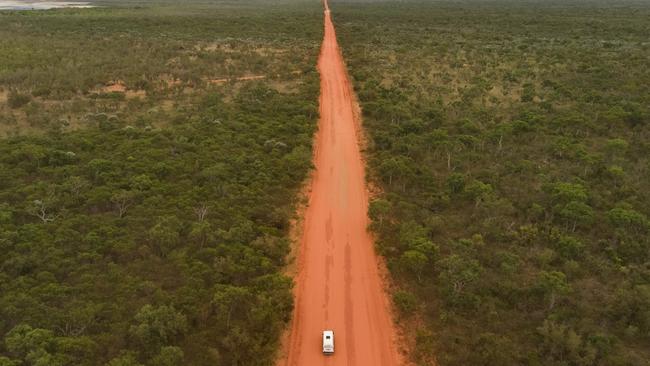
To visit the Northern Territory in June is to undergo a sensory upgrade. The saturation of colour, from brilliant sunsets and ochre-hued bush dotted with vivid yellow kapok flowers and red kangaroo paw, almost hurts the eyes. The orchestral thrum of birds and insects can be so loud it reverberates in your chest.
“It’s like being inside a David Attenborough documentary,” says Northern Territory local and guide Chase Johnson. The tour guide, who was raised in the little hamlet of Humpty-Do, 30 minutes’ drive southeast from Darwin, has spent her life exploring the region’s waterways and wilderness, and interacting with saltwater crocodiles. Every year she looks forward to the spectacle that winter brings – and the throngs of tourists it attracts.

“I drive airboats on a flood plain, and you’ll see hundreds of different birds taking flight,” she says. “The magpie geese are nesting, and the whistling ducks. And you’ll see the baby lotus birds walking on the water lilies, which are flowering.”
While the southern states shiver through single-digit temperatures, the weather is balmy and skies mostly clear at this time of year in Australia’s northern reaches.
“It hits about 15 degrees early in the morning, but in the day the temperature gets up to about 30 degrees with around 20 to 30 per cent humidity, which is just beautiful,” Johnson says.
The same can be said for the dramatic Kimberley coastline, which stretches 12,000km from the NT border to Broome and the start of the Pilbara. Its thunderous waterfall season, which usually ends this month, is expected to be extended this year, thanks to significant rainfalls during the big wet.
It’s prime time for tourism in Tropical North Queensland, too. Tourism Port Douglas Daintree chief executive Tara Bennett points out there are more hours of daylight, enabling visitors to the Queensland holiday region to do more sightseeing.

“Being closer to the equator, the sun isn’t setting until around 6pm, so you’ve got the longer days to enjoy the beautiful weather,” she says. The jellyfish have migrated so beaches, such as the long sandy arc of Four Mile, are open for swimming, and midday temperatures are relatively mild, offering more opportunities to make the most of outdoor activities.
“Whereas through the summer we’d get out and be active early in the morning and in the late afternoon, but park ourselves by a creek or stay indoors in the middle of the day, all of a sudden you can be out all day,” Bennett explains, adding: “We have such an abundance of nature and wilderness in quite a boutique location, I think it’s what people are looking for in order to cherish time away with family and friends.”
As the great migration gets under way, Travel + Luxury selects some of the best ways to escape winter’s chills.
Top end safaris in the NT
The Top End is at its best during dry season. Wildlife is active, and the region’s most striking and remote destinations are easily accessible. Some of Litchfield National Park’s must-visit locations, such as the sandstone towers of the Lost City and Tjaynera Falls, are closed during the wet season (December to April), while some tour operators shut up shop over the oppressively hot Christmas period. It’s all systems go during winter.
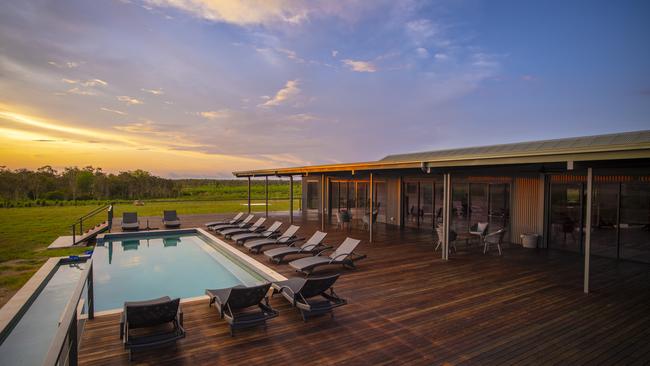
Those who haven’t visited the region since before the pandemic will be pleasantly surprised to find a spate of luxury accommodation has opened in the past 18 months. Finniss River Lodge, a boutique property on a working cattle farm 90 minutes from Darwin, features six suites overlooking broad, lush wetlands.
“I call it big sky country,” says Johnson, who manages the lodge and hosts tours around the 200km sq property. “You can stand on the deck, and the sky is so clear and blue. Then at night, we get the fire pit going and watch the stars light up the sky. Right now, we’re seeing the most amazing light shows.”
■ From $1250 a person, twin-share, until December 13.
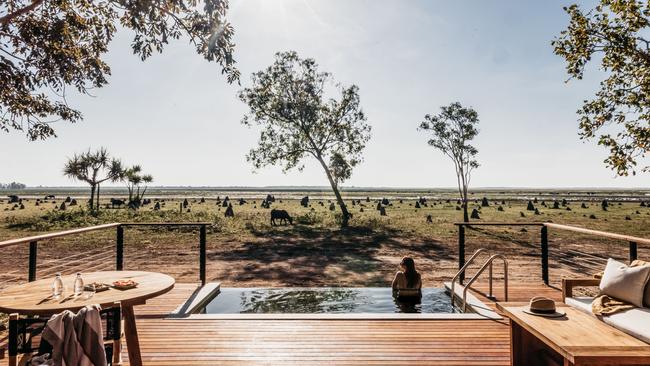
The newly opened Jabiru Retreat, part of Bamurru Plains safari lodge near Kakadu National Park, organises close encounters with the birdlife, water buffalo and crocodiles of the Mary River wetlands. The two safari-style bungalows, with mesh screen walls and shared plunge pool, give a front-row seat to one of the Top End’s most diverse natural habitats.
■ Jabiru Suites from $6160 for up to four people during peak season (July 1-August 31).
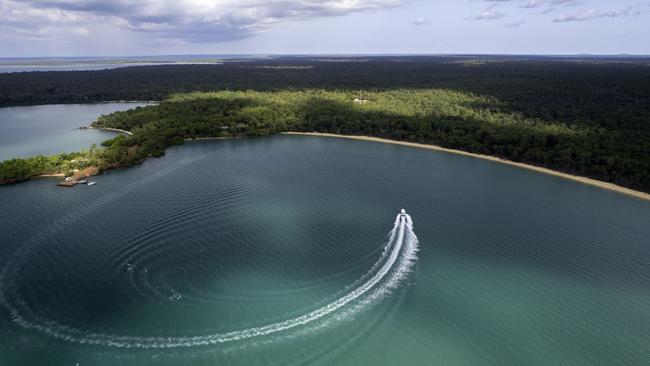
Further north, Cobourg Peninsula is wild and remote. Located within Garig Gunak Barlu National Park and accessible via Arnhem Land, the cape fans west towards the Tiwi Islands. Teeming with wildlife, this rugged paradise is best experienced during winter, unless you’re a keen angler (fishing, especially for barramundi, is more favourable during the shoulder season). Pick of the accommodation is Seven Spirit Bay wilderness lodge, a collection of villas accessible only by boat or plane to its private airstrip. It’s an ideal base for guided 4WD and boat tours to fascinating sites such as the ruins of the 19th-century Victoria Settlement. From $2595 a villa a night, May to September.
The Kimberley – from top to bottom
Spanning more than 420,000km sq, it’s impossible to admire all the Kimberley’s treasures in one trip, but whatever the itinerary, the ancient geological drama of the region should be viewed from multiple perspectives.
Only from the air can you see rusty red cliffs bleed into the white sands of Broome’s Cable Beach, or truly appreciate the Buccaneer Archipelago as it rises from the azure Timor Sea. The Bungle Bungles, south of Wyndham, are impressive on a scenic flight, but only from the ground can you begin to comprehend the size of the megaliths. By boat, feel the cool spray from waterfalls pouring into deep pools, and get close to crocs during their prime sunbathing season.

The beauty of the Kimberley, according to Coral Expeditions commercial manager Jeff Gillies, is travellers can visit just a few months apart and have a completely different experience. Every April, the operator’s fleet sails to Darwin and Broome to begin dry-season tours. In May, passengers witness the explosion of greenery; cascades such as the twin King George Falls are at their most spectacular. Later in the season, around August, the billabongs and rivers are calm, and you’re likely to see the annual whale migration.
“We’re not stuck to a fixed itinerary, so we have the flexibility to stop and watch,” he says. “There’s so much marine life, and it’s one of the most outstanding places for birdwatching, everything from predatory species like ospreys all the way down to the tiny little kingfishers and honeyeaters that hide in the mangroves.”
■ Coral Expeditions 10-night, all-inclusive Kimberley Cruise (between Darwin and Broome) from $9775 a person, twin-share.

The Ghan and Ponant’s 18-night rail and sail adventure comes close to delivering a complete 3D Kimberley encounter. Operating monthly between April and July, the 18-night tour begins with a two-night rail trip from Adelaide to Darwin via Alice Springs, before boarding Ponant’s Le Laperouse and exploring the wonders of the Kimberley, including King George River, Prince Frederick Harbour and Collier Bay. Guests can also book helicopter tours over Mitchell Falls and view rock art galleries.
■ Journey Beyond’s Rail and Sail from $19,475 a person, twin-share, from April 2024.
Ocean encounters in Tropical North QLD

June is the time to see dwarf minke whales off Cairns. Clint Carroll has facilitated close encounters between tourists and the whales every June and July for the past 15 years, and says the curious marine mammals are as reliable as clockwork.
“Year after year the pods creep up the east coast of the Great Barrier Reef and choose to interact with the boats and customers out off the vessels,” the manager of Cairns Dive Adventures says. “It’s one of the only places in the world where it consistently happens year after year, and it’s a phenomenal event.”
The reef is also at its most magnificent during winter. The water is a pleasant 25C, and thanks to lower rainfall, the colours and contours can be seen in the sharpest detail.
“From June and all the way through until about October, the sediment in the water drops and underwater visibility can push out to 20 to 30m,” he says.
“It’s easy to find everything – tiny nudibranchs to cuttlefish, anemone fish, stingrays and octopus and turtles, which are a big highlight for most people.”
■ A three-night liveaboard outing on Ribbon and Agincourt reefs includes 10 dives and all meals; from $1770 a person, twin-share.

The clear water also makes for great aerial viewing. Nautilus Aviation operates chopper tours, and will even set passengers down on the pristine sands of Vlassof Sand Cay for a picnic lunch.
■ Nautilus Aviation Vlasoff Cay heli picnics from $949 a person.
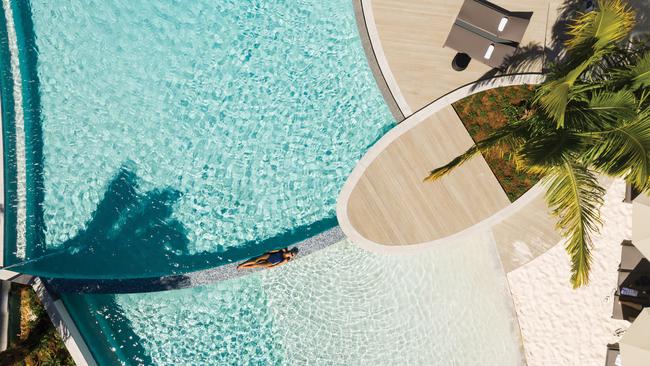
By boat, it takes about 80 minutes to reach the inner reef from Cairns; tours can be booked at the Cairns Visitor Centre and the Reef Info Visitor Centre. The city has a solid selection of quality hotels to retreat to after outings on the ocean or day trips to the Daintree rainforest or Atherton Tablelands. Crystalbrook Collection has three properties in the city. Located along the esplanade, the towering circular centrepiece of the 304-guestroom Crystalbrook Riley stands out. It’s the best of the bunch for lounging by the pool and gazing at the Coral Sea. The after-dark vibe of its newer sibling, Crystalbrook Flynn, suits those wanting a more social setting.
■ Crystalbrook Riley from $305 a night; Crystalbrook Flynn from $325 a night.
Having undergone a multimillion-dollar refurbishment in 2019, Shangri-La The Marina, Cairns is another great option. Its Circle of Luxury program creates bespoke excursions for guests wanting to explore.
■ Shangri-La The Marina, Cairns, from $325 a night.
More to the story
Last year, northern Australia’s top holiday destinations experienced a post-pandemic domestic travel boom. More than 530,000 Victoria and NSW residents flocked to the Top End in the 12 months ending December 2022, accounting for 56 per cent of total domestic tourism, and contributing more than $1.2bn to the territory’s economy.
They were also holidaying in Queensland’s tropical north, with the two states accounting for 826,000 of the record 1.5 million holiday-makers who visited the region (a 33 per cent increase since 2019).
International tourism is still recovering in these regions, however the future looks promising. The Northern Territory’s international visitor numbers are forecast to return to pre-pandemic levels by 2025, while Western Australia’s overseas arrivals had reached 81 per cent of pre-Covid levels in March this year.


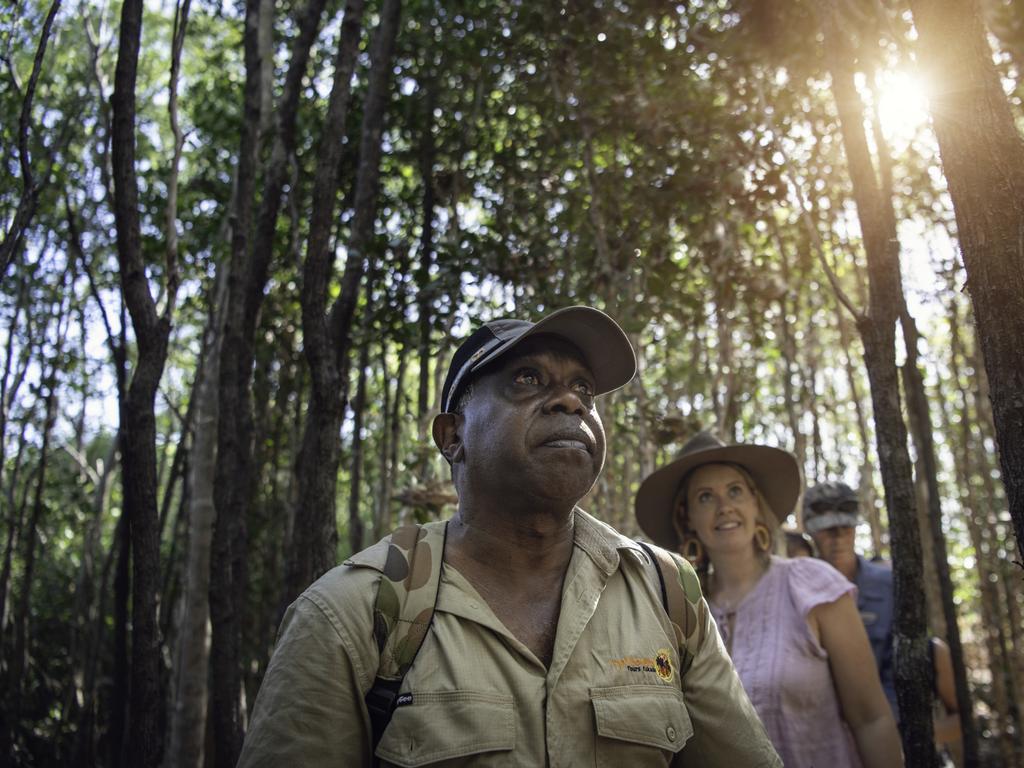


To join the conversation, please log in. Don't have an account? Register
Join the conversation, you are commenting as Logout